|

|
|
| |
|
China Oil Painting Direct
|
|
100% hand painted, 100%
cotton canvas,
100% money back if not satisfaction.
|
|
|
|
ART WORKS
INDEX
A B C D E F G H I J K L M N O P Q R S T U V W X Y Z
|
|
ARTISTS
INDEX
A B C D E F G H I J K L M N O P Q R S T U V W X Y Z
|
|
|
|
 |
OOST, Jacob van, the Younger 
|
|
Flemish painter (b. 1639, Brugge, d. 1713, Brugge)
|
|
 |
OOSTERWIJK, Maria van 
|
|
Dutch woman painter (b. 1630, Nootdorp, d. 1693, Uitdam)
was a Dutch Baroque painter, specializing in richly detailed still lifes. She was a student of Jan Davidsz de Heem. Van Oosterwijk worked in Delft and later in Amsterdam (1675-1689), where she lived opposite the workshop of Willem van Aelst. She was popular with European royalty, including Emperor Leopold, Louis XIV of France and William III of England. Despite this, as a woman, she was not allowed to join the painters' guild. Her work is in many prominent collections, including the Fitzwilliam Museum (Cambridge), the Kunsthistorisches Museum (Vienna), the Palatine Gallery in Palazzo Pitti (Florence), the Royal Collection
|
|
 |
Oostsanen, Jacob Cornelisz van 
|
|
Flemish, 1472-1533
|
|
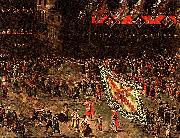 |
oranien 
|
|
han mordades 1584 pa uppdrag av filip . i ett hus som idag ar museum over det nederlandska frihetskriget
se
|
|
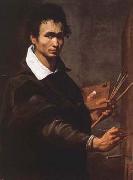 |
Orazio Borgianni 
|
|
Italian Baroque Era Painter, 1578-1616
|
|
 |
Orazio Gentileschi 
|
|
1563-1639 Italian Orazio Gentileschi Galleries Tuscan painter, b. Pisa. His real surname was Lomi, but he adopted his uncle name. He studied in Rome, where he was associated with Agostino Tassi in the decoration of palace interiors. Influenced by Caravaggio, Gentileschi developed a more softly luminous light and a cooler, more lyrical style. He also painted frescoes in Santa Maria Maggiore and in the Lateran. After spending several years in Genoa and in France, he settled in England (1626) at the invitation of Charles I. Gentileschi principal works include The Annunciation (San Siro, Genoa); Flight into Egypt (Louvre); Sibyl (Hampton Court, England); and Moses Saved from the Waters (Prado). He also painted numerous portraits. Artemesia Gentileschi was his daughter.
|
|
 |
Orazio Riminaldi 
|
|
Italian painter
b. 1593, Pisa, d. 1630, Pisa
|
|
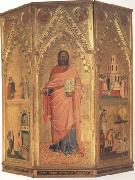 |
Orcagna 
|
|
b Florence c 1320 d Florence 1368
|
|
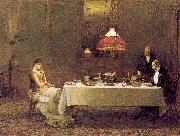 |
Orchardson, Sir William Quiller 
|
|
English, 1832-1910
|
|
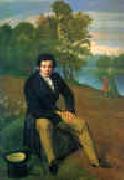 |
Orest Kiprensky 
|
|
1782-1836
Russian
Orest Kiprensky Galleries
Orest was born in the village of Koporye near Saint Petersburg on 24 March [O.S. 13 March] 1782. He was an illegitimate son of a landowner Alexey Dyakonov, hence his name, derived from Kypris, one of the Greek names for the goddess of love. He was raised in the family of Adam Shvalber, a serf. Although Kiprensky was born a serf, he was released from the serfdom upon his birth and later his father helped him to enter a boarding school at the Imperial Academy of Arts in Saint Petersburg in 1788 (when Orest was only six years old).
He studied at the boarding school and the Academy itself until 1803. He lived at the Academy for three more years as a pensioner to fulfill requirements necessary to win the Major Gold medal. Winning the first prize for his work Prince Dmitri Donskoi after the Battle of Kulikovo (1805) enabled the young artist to go abroad to study art in Europe.
A year before his graduation, in 1804, he painted the portrait of Adam Shvalber, his foster father (1804), which was a great success. The portrait so impressed his contemporaries, that later members of the Naples Academy of Arts took it for the painting by some Old Master - Rubens or van Dyck. Kiprensky had to ask the members of the Imperial Academy of Arts for letters supporting his authorship.
Wikimedia Commons has media related to: Orest Kiprensky
After that, Kiprensky lived in Moscow (1809), Tver 1811, Saint Petersburg 1812, in 1816-1822 he lived in Rome and Napoli. In Italy he met a local girl Anne Maria Falcucci (Mariucci), to whom he became attached. He bought her from her dissolute family and employed as his ward. On leaving Italy, he sent her to a Roman Catholic convent.
In 1828, Kiprensky came back to Italy, as he got a letter from his friend Samuel Halberg, informing him that they had lost track of Mariucci. Kiprensky found Mariucci, who had been transferred to another convent. In 1836 he eventually married her. He had to convert into Roman Catholicism for this marriage to happen. He died by pneumonia in Rome later that year.
|
|
 |
Orlandi, Deodato 
|
|
Flemish Northern Renaissance Painter, ca.1488-1541
|
|
 |
Orlando Norie 
|
|
British, 1832-1901
|
|
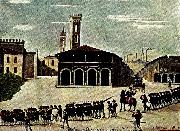 |
orneore metelli 
|
|
|
|
 |
Orozco, Jose Clemente 
|
|
Mexican, 1883-1949
Mexican mural painter. When he lost his left hand at age 17, he abandoned architectural studies for painting, pursuing Mexican themes. As a caricaturist for a revolutionary paper, he explored Mexico City's slums and painted a series of watercolours, House of Tears, on the lives of prostitutes. The reaction of moralists forced him to flee to the U.S. in 1917, but in 1919 the new government of Álvaro Obreg??n welcomed him back, and he joined Diego Rivera and David Alfaro Siqueiros in creating large-scale murals for public buildings, in which he continued his radical social commentary. Again forced to abandon Mexico in 1927, he worked until 1934 in the U.S., where his style evolved and matured in murals from coast to coast. In 1934, his international reputation firmly established, he returned to Mexico and embarked on his most technically impressive and emotionally expressive murals, including Catharsis (1934),
|
|
 |
Orpen, Willam 
|
|
Irish, 1878-1931
|
|
 |
ORRENTE, Pedro 
|
|
Spanish Baroque Era Painter, 1580-1645
Spanish painter. He is one of the most interesting artists of his day. His father, Jaime Orrente, was a merchant from Marseille, his mother, Isabel Jumilla, from Murcia. By 1600 Orrente was active in Toledo, where he was commissioned to paint a retable (untraced). In 1607 and again in 1611 he was in Murcia, and a journey to Italy recorded by Jusepe Mart?nez and Palomino must have taken place between those years. It seems certain that he visited Venice and met Leandro Bassano
|
|
 |
Orsi, Lelio 
|
|
Italian, approx. 1508-87
.Italian painter and draughtsman. A prominent Emilian artist of the mid-16th century, he was influenced by Correggio as well as by the late Mannerist style of Giulio Romano. His large-scale works seem to have been mainly secular decorations, notably illusionistic fa?ades, of which only fragments are extant. Their energy and expressiveness are apparent, however, in the surviving paintings of smaller dimensions. Orsi's sole documented architectural work is the Collegiata di S Stefano, Novellara
|
|
 |
Ortega, Martin Rico y 
|
|
Spanish, 1833-1908
|
|
 |
Ortiz, Francisco Pradilla 
|
|
Spanish, 1848-1921
Spanish painter and museum official. He first studied in Saragossa with the stage designer Mariano Pescador (d 1886), and in 1866 moved to Madrid where he began to work with the stage designers and decorators Ferri and Busato. He entered the Escuela Superior de Pintura, Escultura y Grabado and also attended the Academia de Acuarelistas. In 1873 Pradilla and his fellow student Casto Plasencia (1846-90) won history painting scholarships to study at the newly founded Academia Espaola de Bellas Artes in Rome. In 1874 he sent from Rome a copy of Raphael's Dispute over the Holy Sacrament, a work Pradilla completed in collaboration with Alejandro Ferrant (b 1844), another Spanish scholarship holder. During Pradilla's second and third years abroad he travelled through France, visiting the Paris Exposition Universelle of 1875, and Italy, where he was particularly impressed by Venice and the works of Veronese, Titian and Jacopo Tintoretto. Pradilla won a major prize in 1878 at the Exposicien Nacional de Bellas Artes in Madrid; as a result of this success he received the commission for another large picture on a historical theme, the Surrender of Granada (1882; in situ) for the Palacio del Senado (now Pal. de las Cortes) in Madrid. This work shows Pradilla's concern to paint from life in his treatment of the landscape of Granada. He produced other paintings on related subjects, including Mad Queen Joanna Imprisoned at Tordesillas (priv. col., see Pardo Canalis, pl. xviii) and the Sigh of the Moor (Madrid, Rodriguez Bauz priv. col., see Pardo Canalis, pl. xvii). Pradilla also painted lively scenes of local life and colour. The years of his stay in Rome, where he was director of the Academia Espaola between 1881 and 1883, allowed him to get to know the country around Rome and many other places in Italy.
|
|
 |
Osbert, Alphonse 
|
|
French Symbolist Painter, 1857-1939
French painter. He studied at the Ecole des Beaux-Arts and in the studios of Henri Lehmann, Fernand Cormon and L?on Bonnat. His Salon entry in 1880, Portrait of M. O. (untraced), reflected his early attraction to the realist tradition of Spanish 17th-century painting. The impact of Impressionism encouraged him to lighten his palette and paint landscapes en plein air, such as In the Fields of Eragny (1888; Paris, Y. Osbert priv. col.). By the end of the 1880s he had cultivated the friendship of several Symbolist poets and the painter Puvis de Chavannes, which caused him to forsake his naturalistic approach and to adopt the aesthetic idealism of poetic painting. Abandoning subjects drawn from daily life, Osbert aimed to convey inner visions and developed a set of pictorial symbols. Inspired by Puvis, he simplified landscape forms, which served as backgrounds for static, isolated figures dissolved in mysterious light. A pointillist technique, borrowed from Seurat, a friend from Lehmann's studio, dematerialized forms and added luminosity. However, Osbert eschewed the Divisionists' full range of hues in his choice of blues, violets, yellows and silvery green. Osbert's mysticism is seen in his large painting Vision
|
|
 |
Osborn, Emily Mary 
|
|
English, 1834-1893
|
|
 |
Osborne, Walter 
|
|
Irish, 1859-1903
Irish painter. The son of the animal painter William Osborne (1823-1901), he trained in the schools of the Royal Hibernian Academy (1876-81). In 1881 he won the Royal Dublin Society's Taylor scholarship and went to study at the Koninklijk Academie voor Schone Kunsten, Antwerp. Charles Verlat was the professor of painting, and Antwerp was then at the height of its popularity with students from the British Isles. In Antwerp and subsequently in Brittany, Osborne made contact with painters of the Newlyn school and other British naturalists. In Brittany he painted Apple Gathering, Quimperle (1883; Dublin, N.G.), a small greenish-grey picture of a girl in an orchard, which in subject and treatment shows the influence of Jules Bastien-Lepage. Throughout the 1880s Osborne worked in England, joining groups of artists in their search for the ideal naturalist motif. In the autumn of 1884 he was at North Littleton, near Evesham (Heref. & Worcs), where he painted Feeding Chickens in weather so cold that his model, a young peasant girl, nearly fainted. It is carefully drawn but painted with the square-brush technique characteristic of Bastien-Lepage's followers, and is very close to the contemporary work of George Clausen and Edward Stott (1855-1918). At Walberswick in Suffolk he painted October Morning (1885; London, Guildhall A.G.), a carefully studied plein-air work using bright dots of pure colour on a base of beige and grey. During this time Osborne gave careful attention to the showing of his work. He exhibited regularly at the Royal Hibernian Academy in Dublin from 1877 and at the Royal Academy in London from 1886.
|
|
 |
Osborne, William 
|
|
Irish, 1823-1901
|
|
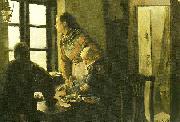 |
oscar bjorck 
|
|
född 15 januari 1860 i Stockholm, död av en hjärtattack i sitt hem klockan 03.00 den 5 december 1929, var en svensk konstnär och professor vid Konsthögskolan 1898-1925, och från 1918 även vice preses.
Åren 1877-1882 var han elev till Edvard Pers??us vid konstakademins principskola och målade bland annat prisämnena Loke fängslas af asarne (1880), Gustaf Vasa inför kung Hans (1881) och Den förlorade sonens återkomst (1882, belönad med kungliga medaljen). 1883 fick Björck akademiskt resestipendium och vistades vintern 1883?C84 i Paris. Vintern 1884?C85 reste Björck till M??nchen, målade några porträtt, bland annat ett i helfigur av sin hustru. Våren 1885 flyttade han till Venezia och på hösten till Rom. Där målade han den stora modelltavlan Susanna (Göteborgs museum) och Romerska smeder (galleriet i Washington, en skiss till samma tavla finns i Göteborgs museum). 1887 målades i Venezia Veneziansk saluhall (nationalmuseum), Lördagsmässa i Markuskyrkan och andra tavlor.
Efter en sommarvistelse på Skagen, där han förut tillbringat två somrar, 1882 och 1884, bosatte sig Björck 1888 i Stockholm. Han har sedan huvudsakligast målat porträtt. Bland dessa kan nämnas flera av konung Oscar (bland dem ett på Skokloster, ett i helfigur på Drottningholm, ett med krona och mantel, på Stockholms slott, ett som övergick i tyske kejsarens ägo), prins Eugen vid staffliet (nationalmuseum, 1895), kronprins Gustaf (Stockholms slott, 1900), konstnärens hustru (helfigur, 1891, Göteborgs museum) och friherre Nordenfalk (konstakademien, 1892). Dessutom skapade han några landskap, ett par genrebilder och olika dekorativa målningar.
Från 1889 var han ledamot vid konstakademin och lärare vid Konsthögskolan. 1898 blev han professor.
Björck var kommissarie för konstavdelningen vid Stockholmsutställningen 1897 och vid Baltiska utställningen 1914 samt för den svenska utställningen i London 1924.
|
|
 |
Oscar Bluemner 
|
|
German-born American Painter, 1867-1938,was a German-born American Modernist painter. He was born in Hanover, Germany. He moved to Chicago in 1893 where he freelanced as a draftsman. He relocated to New York in 1901. In 1910 he met Alfred Stieglitz, who introduced him to the artistic innovations of the European and American avant-garde. Then in 1915 Stieglitz gave him a solo exhibition at his gallery, 291.
|
|
 |
Oscar Bluhm 
|
|
German Painter, 1867-1912
|
|
 |
Oscar Pereira da Silva 
|
|
(1867-1939 ) - Painter
|
|
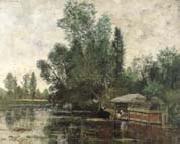 |
Oscar Torna 
|
|
Swedish, 1842-1894
|
|
 |
oscar wilde 
|
|
Born: 16 October 1854
Birthplace: Dublin, Ireland
Died: 30 November 1900
Best Known As: The author of The Importance of Being Earnest
|
|
 |
Osias Beert 
|
|
1580-1624
Flemish
Osias Beert Galleries
Flemish painter. In 1596 he went to study with Andries van Baseroo and in 1602 became a master in the Antwerp Guild of St Luke; these two dates suggest his probable date of birth. Beert married Marguerite Ykens on 8 January 1606. Contemporary documents describe him as a cork merchant. The esteem enjoyed by Beert is indicated by the large number of pupils he had, including, in 1610, Frans van der Borch; in 1615, Frans Ykens; in 1616, Paulus Pontius; and, in 1618, Jan Willemssen. Beerts son, Osias Beert the younger (1622-78), was also a painter and became a master in 1645.
|
|
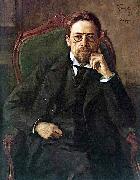 |
Osip Braz 
|
|
painted Portrait of Anton Pavlovich Chekhov in 1898
|
|
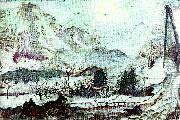 |
oskar kokoschka 
|
|
Kokoschka was born in Pöchlarn. His early career was marked by portraits of Viennese celebrities, painted in a nervously animated style. He served in the Austrian army in World War I and was wounded. At the hospital, the doctors decided that he was mentally unstable. Nevertheless, he continued to develop his career as an artist, traveling across Europe and painting the landscape.
|
|
 |
Oskar Schlemmer 
|
|
German Abstract Painter, 1888-1943
German painter, sculptor, choreographer and stage designer. After the death of his parents he lived with his sister at Geppingen, and in Stuttgart from 1903 to 1905 he served an apprenticeship at a workshop specializing in marquetry while attending classes at the Kunstgewerbeschule. He continued his studies on a bursary from 1906 to 1911 at the Kunstakademie in Stuttgart under the plein-air landscape painters Christian Landenberger (1862-1927) and Friedrich von Keller (1840-1914). In 1911-12 he lived in Berlin, where he produced paintings such as Hunting Lodge, Grunewald (1911; Stuttgart, Staatsgal.) and Self-portrait (1912; Stuttgart, Staatsgal.) under the influence of Cubism. After returning to Stuttgart, Schlemmer studied under Adolf Helzel,
|
|
 |
Osman Hamdy Bey 
|
|
Turkey, born 1842 - died 1910
|
|
 |
OSTADE, Adriaen Jansz. van 
|
|
Dutch painter (b. 1610, Haarlem, d. 1685, Haarlem).
|
|
 |
Ostade, Adriaen van 
|
|
Dutch Baroque Era Painter, 1610-1685
Painter, draughtsman and etcher. According to Houbraken's rather unreliable biography, he was a pupil concurrently with Adriaen Brouwer of Frans Hals in Haarlem. Hals influenced him very little, whereas Brouwer, who was described as 'known far and wide' as early as 1627, had a decisive influence on the evolution of Adriaen van Ostade's always idiosyncratic portrayal of peasant life. The first documentary mention of Adriaen van Ostade as a painter is in 1632 (Schnackenburg, 1970). Most of his paintings are signed and dated, the earliest firmly dated example being the Peasants Playing Cards (1633; St Petersburg, Hermitage).
|
|
 |
Ostade, Isaack Jansz. van 
|
|
Dutch Baroque Era Painter, 1621-1649
|
|
 |
OSTADE, Isaack van 
|
|
Dutch Baroque Era Painter, 1621-1649
|
|
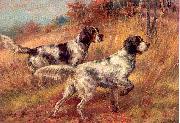 |
Osthaus, Edmund Henry 
|
|
American, 1858-1928
|
|
 |
Oswald achenbach 
|
|
German Painter, 1827-1905
was a German landscape painter. Born in Desseldorf, he received his art education from his brother, Andreas Achenbach. His landscapes generally dwell on the rich and glowing effects of color which drew him to the Bay of Naples and the neighborhood of Rome. From 1863 to 1872 he was Professor of Landscape Painting at the Desseldorf Academy. He died in Desseldorf of an inflammation of the lungs.
|
|
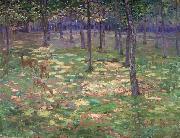 |
Otakar Lebeda 
|
|
painted Z bechynske obory - Srnky in 1899
|
|
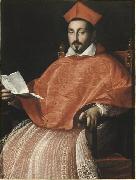 |
Ottavio Leoni 
|
|
Ottavio Leoni (1578 - 1630) was an Italian painter and printmaker of the early-Baroque, active mainly in Rome.
He was born in Rome, where he first trained with his father, Lodovico Leoni. He painted altarpieces for churches in Rome such as an Annunciation for Sant'Eustachio and a Virgin and child with St. Giacinto for Santa Maria della Minerva, and a Saints Charles, Francis, & Nicholas for Sante Urbano. He became a member, and later president, of the Accademia di San Luca and a Cavalieri of the Order of Christ, on which occasion he presented the church of the Academy the Martyrdom of St. Martina. He died in Rome. Ottavio Leoni was also the engraver of a set of portraits of painters. His portrait of Michelangelo Merisi Caravaggio is the only documented portrait of the painter by another artist.
His work is exhibited in places such as Fine Arts Museums of San Francisco; Museum of Fine Arts, Boston; National Gallery of Art; Bowes Museum; Courtauld Institute of Art; Los Angeles County Museum of Art; and Palazzo Ruspoli, Rome, Italy.
|
|
 |
Otter, Thomas 
|
|
American, 1832-90
|
|
 |
ottilia adelborg 
|
|
Eva Ottilia Adelborg, född 6 december 1855 i Karlskrona, död 19 mars 1936, var en svensk akvarellkonstnär. Hon var dotter till kommendörkapten Bror Jacob Adelborg och hans hustru Hedvig Catharina af Uhr samt syster till Gertrud Adelborg.
Adelborg var "bilderbokskonstnärinna" enligt äldre benämning. Hon benämns idag barnboksillustratör, men illustrerade även böcker för vuxna, komponerade tapetmönster och skrev böcker och kan därför benämnas författare. Bosatt i Gagnef i Dalarna från juli 1903, då hon startade en skola för knyppling. Museum över hennes liv och verksamhet finns i Gagnefs gamla prostgård. Känd för bland annat affischen "Prinsarnes blomsteralfabet" (1892). Det litterära Ottilia Adelborg-priset instiftades år 2000 av Gagnefs kommun.
|
|
 |
Otto Bache 
|
|
1739-1927
|
|
 |
Otto Barth 
|
|
(18 June 1891 - 3 May 1963) was a highly decorated Generalmajor in the Wehrmacht during World War II who commanded the 30. Infanterie-Division. He was also a recipient of the Knight's Cross of the Iron Cross. The Knight's Cross of the Iron Cross was awarded to recognise extreme battlefield bravery or successful military leadership. Otto Barth was captured by Soviet troops following the fall of the Courland Pocket in 1945. He was held until 1955.
|
|
 |
Otto Boetticher 
|
|
Circa 1816-
|
|
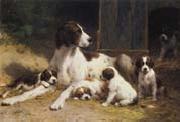 |
Otto Eerelman 
|
|
Dutch, 1839-1926
|
|
 |
Otto Greiner 
|
|
painted Prometheus in 1909
|
|
 |
Otto Hennig 
|
|
Germany (1826 -1899 ) - Painter
|
|
|
|
|
|
|
|
|
| Wholesale China Oil Painting Wholesale Oil Painting China Xiamen Portrait Reproduction on canvas Chinese Oil Painting Wholesale USA Oil Painting |
|
|
|
|